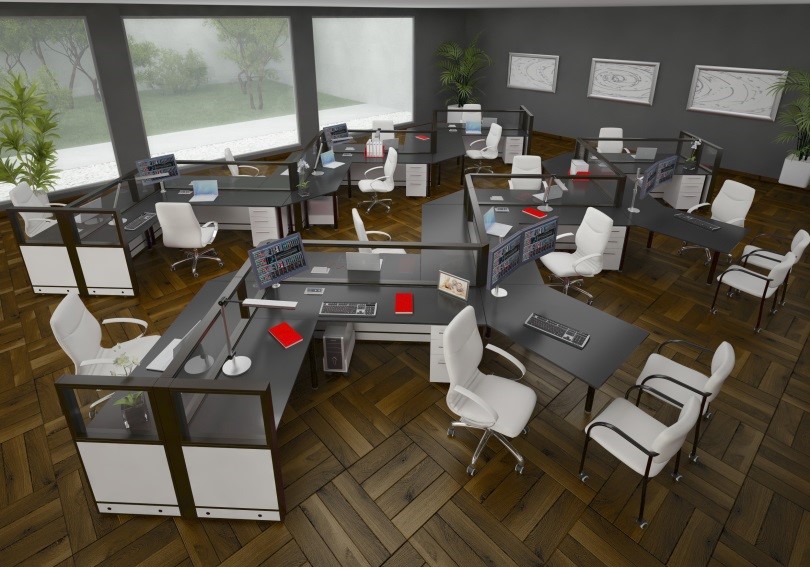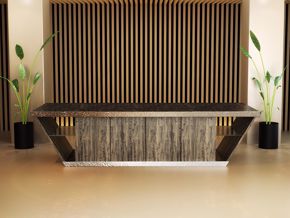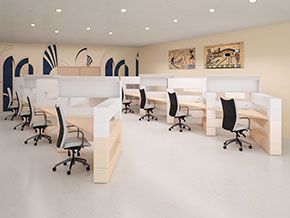Juliet: "What's in a name? That which we call a rose by any other name would smell as sweet." Romeo and Juliet (II, ii, 1-2)

In Shakespeare's passionate fictional account of non-typical lovers, Romeo Montague and Juliet Capulet fall in love with each other. They are disaster-prone from the start as affiliates of two combatant families. Here Juliet states to Romeo that a name is an artificial and meaningless convention, and that she loves the person who is called "Montague", not the Montague name and not the Montague family. Romeo, out of his passion for Juliet, rejects his family name and vows, as Juliet asks, to "deny (his) father" and instead be "new baptized" as Juliet's lover. This one short line summarizes the principal skirmish and calamity of the play, and is one of Shakespeare's most famous quotes.
"What's in a name?" is a common question people have quoted time and time again. In kind I ask; what’s in a workplace design?
Workplace design-useless cost or valuable communication
Much like Juliet suggests of a name, is a workplace design artificial and a meaningless convention or is there a mental affiliation that carries a deeper significance?

Workplace design has long been undervalued in the minds of many decision-makers and thought of as a useless cost. In essence; a workplace with any design is still a workplace. On one hand most will agree it’s nice to have but on the other few really want to shell out dollars just to get it.
Beginning from a purely elementary entry point, everyone will agree an office workplace is a place where workers congregate to perform individual tasks that contribute to the good of the whole organization.
The question is: does a workplace’s design have any value other than its superficial appearance?
Let us consider the composition any office workplace and what it really is. It is the grouping of many people of countless backgrounds, cultures, beliefs, all of which represents their identity.
Language-key to human reason and communication

Among other things; the one thing that really separates them, one from another, is their mind, which gives them the ability to reason individually on a conscious level. To think consciously and communicate, one must use a common language that is understood by all.
Office design has a language which is not generally understood or appreciated but it is vitally important. In general, it is impossible to think without language. In any commonly communicated language, what is there about it that permits people to function in a communicative fashion? In the case of all languages which have alphabets, letters are placed in a fixed order in the alphabet, i.e., in the English alphabet, "A" always occupies the first position; "B" is in the second location, and so on. All alphabets are alphabets because symbols are accepted by their form or sound in a definite order--change the syntax and we have confusion.
Language is more than sounds and symbols
There is more than a mere sound and alphabetical symbols to language. What is it that a language communicates? Is it not intellectual thought and ideas? Is not intelligence a mental power? Do we not learn from the ideas--using language--to cultivate intelligence, which is known as mental growth and the individuality of the personal mind?
The connection concerning intelligence, cognizance, language, and the arrangement of the letters in the alphabet is the key to measuring the mind and unraveling major problems of mental conflict and inequity.
Workplace design has a language
As with any language, alphabet or otherwise intelligence is conveyed one person to another by commonly accepted meanings. Office workplace design works the same way. As with an alphabet, workplace design language is more than just an eclectic group of furnishings arranged to perform unrelated functions, rather the environment as a whole communicates a central idea, a reason for the company’s existence. Whether the idea is nothing at all or a central theme, it still communicates.
Workplace communication without alphabets
With workplace environments, commonly accepted design element can be used in place of alphabets to communicate thoughts and ideas that are relevant to the universal plan. Shapes, colors, images, art and trees for example all communicate ideas without words.
Ideas without words, is the key to shaping “meaningful” workplaces. An idea without words is the key to communicating a mental theme that is conveyed by a language of imagery rather than alphabet. Idea without words is worth a thousand words. The idea without words behind the name Montague to Juliet carried a meaning deeper than the name itself.









